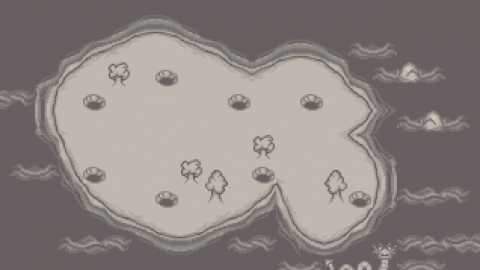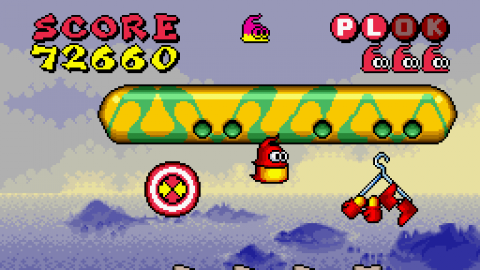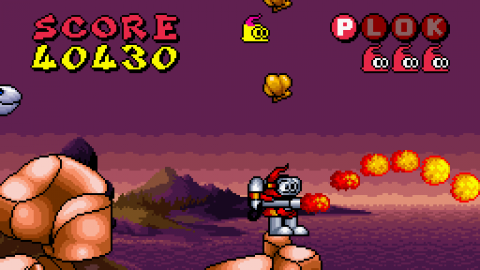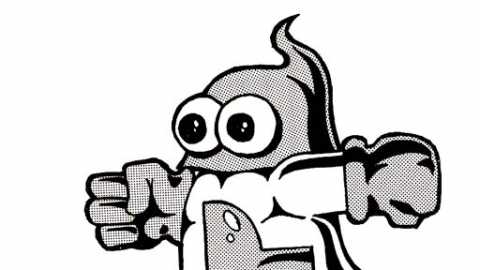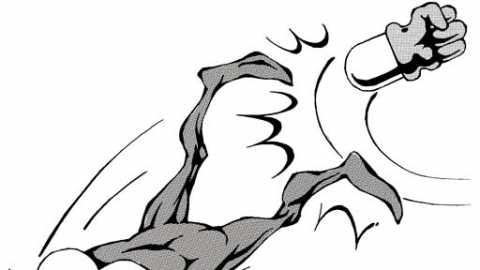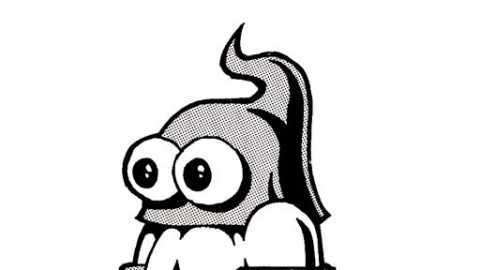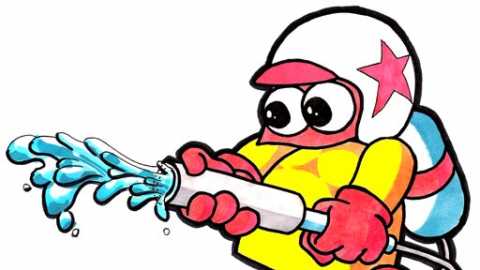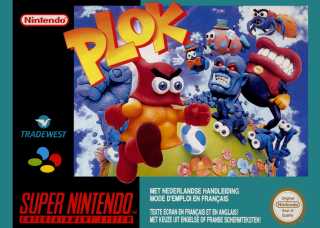Overview
Plok is a side-scrolling action platformer developed by Software Creations (later known as Acclaim Studios Manchester) which was released in 1993 on the SNES. The game is very similar to a lot of the other colorful character-driven platformers of its era, but it distinguished itself with its unique limb-throwing play mechanic and punishing difficulty.
Story
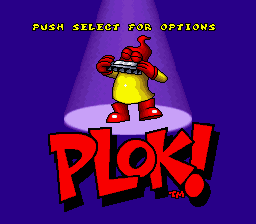
The game opens with Plok, king of the island of Akrillic in the Poly-Esta archipelago, waking up to discover that his Grandpappy’s flag which flew proudly over his home has been stolen. Spotting his flag flying on the nearby Cotton Island, Plok sets sail to retrieve it. Once on Cotton Island, Plok makes his way through a series of decoy flags before finally defeating the Bobbins Brothers and retrieving his family heirloom.
Upon his return home, Plok discovers that the theft of his Grandpappy’s flag was simply for the purpose of luring him away from Akrillic so that it would be left defenseless for the Fleas to take over and raise their flags over the land in the place of Plok’s. Determined to reclaim his island, Plok sets out to rid the island of the Fleas and their allies. His quest eventually takes him to the depths of the Flea Pit where he must face off against the Flea Queen in order to determine the fate of Akrillic.
Gameplay
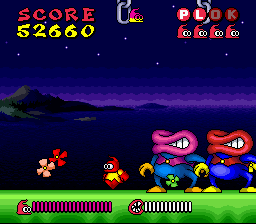
Plok’s primary ability is that he is able to throw his arms and legs in a boomerang-like manner. This ability can be used both as an attack and to solve certain puzzles which involve Plok giving up a limb in order to activate a switch. With fewer limbs, Plok is less mobile and has less “ammunition” to attack with. Limbs used to activate switches can be retrieved from a hanger somewhere else in the level. Plok is also able to perform a spinning high-jump (very similar to Sonic the Hedgehog’s jumps) which allows him to reach platforms he can’t with his weak standard jump. After receiving an amulet later in the game, the high-jump can also be used as an attack.
Plok proceeds from level to level via an overworld screen. The path is linear, but levels can be skipped by using warps throughout the game. Warp zones are accessed by hitting specific berries (usually just used to increase health) until they teleport Plok to the warp area. Once in the warp zone, a “Race Against Time” event will take place which challenges Plok to get some sort of vehicle through a special level and across the finish line in a limited amount of time. If Plok is successful, he’ll be transported ahead to a later level of the game, but if he fails, he’ll be spit back out in the same spot he entered the warp zone.
The world of Poly-Esta is filled with many different items and power-ups for Plok to collect. Shells scattered throughout each level will net him an extra life if he can get enough. They can also be used to fuel his special high-jump attack after the amulet item is received later in the game. Additionally, Plok collects the letters P-L-O-K in order to get “Plokontinues” which allow him to continue his journey if he loses all of his lives. Every time Plok defeats a Rockyfella, it will drop a ruby which grants Plok invincibility for a short time. The Razor Wheel pickup will transform Plok into an invincible spinning steel blade that storms through the world with incredible speed. Presents hidden in the world allow Plok to temporarily don one of many costumes that grant him special abilities.
Development History
The character of Plok was originally developed during the late 80’s by brothers John Pickford and Ste Pickford. The character’s introduction to the public was to be as the star of a Zippo Games developed coin-op game titled Fleapit, but unfortunately after the game was about half complete it was put on hold and eventually disappeared with the closing of the studio. The Pickford brothers however managed to retain the intellectual property rights to the basic game and character design. This allowed them to commence with development of another similar title that would eventually become the 1993 title Plok.
Game Reception
When the Pickford brothers were first developing Fleapit (the game that would become Plok) during the late 80’s, the gaming landscape was ripe for an inventive, cute, colorful, character-driven platformer to come along and explode with popularity. However, during the early 90’s the video game market experienced a massive flood of colorful character-driven platform titles such as Bubsy in: Claws Encounters of the Furred Kind, Rayman, Sonic the Hedgehog, and Zool. Thus, by the time Plok was finally released in 1993, it didn’t seem nearly as fresh as it was when development first started nearly five years ago. Reviews for the game were overall very favorable, but commercially the game was received very poorly and sales were underwhelming. There just wasn’t enough to distinguish this game from all of the others that appeared so similar. The game has also at times been criticized because of its difficulty and lack of a save or password system.
Electronic Gaming Monthly gave the scores of 7,8,9 and 8 with "Sushi-X" exclaiming, "...Plok has got to be one of the most unique games to come out in a while." Ed Semrad wrote, "...while the bosses aren't anything to write home about, the actual game is visually stunning. The challenge level is really high, possibly turning off younger players, but hard-core gamers will love it".

 Super Nintendo Entertainment System
Super Nintendo Entertainment System






